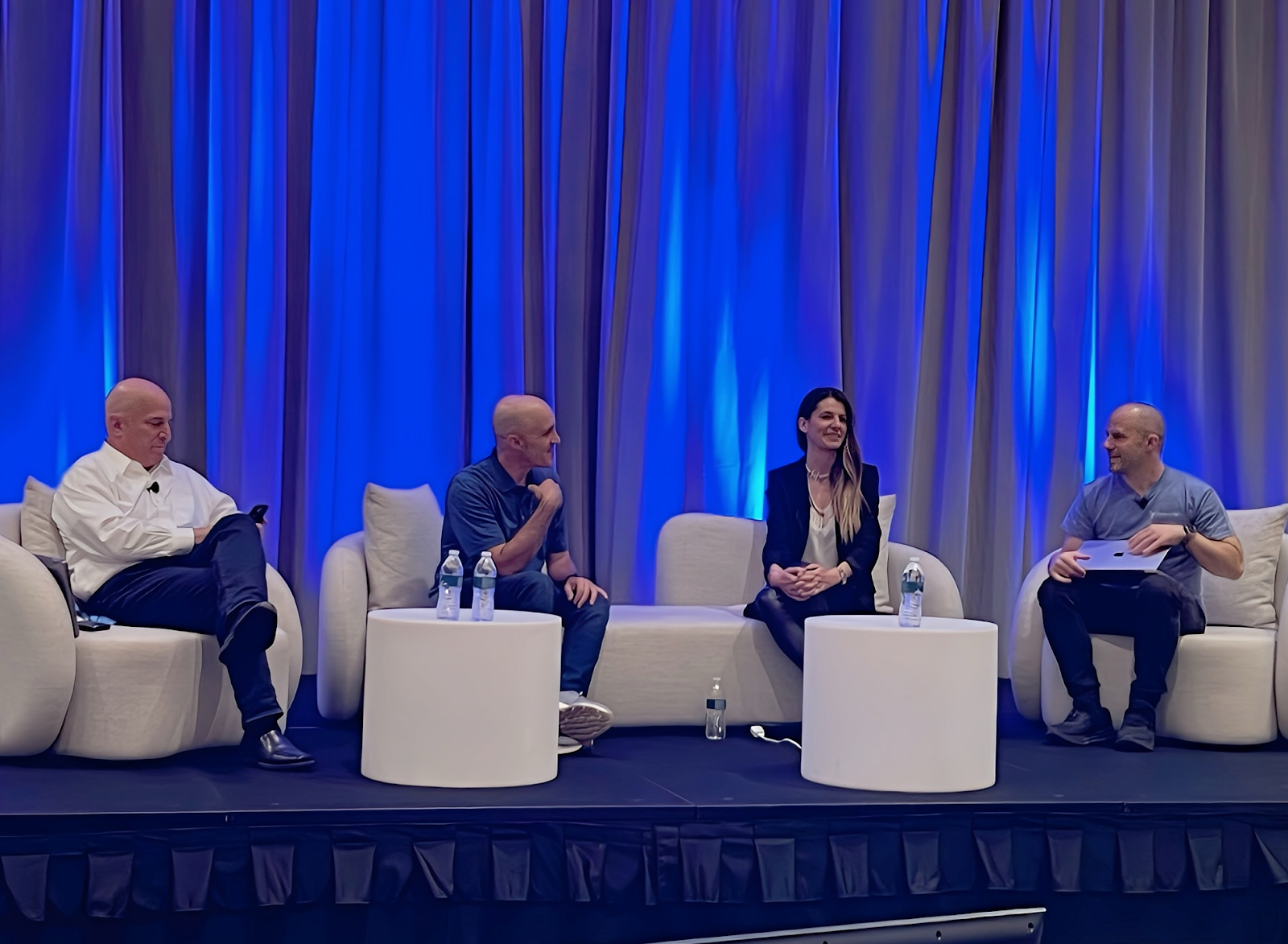Key Takeaways from ILTACON 2025: From Demos to Day-to-Day Impact
ILTACON 2025 confirmed what many in legal tech have been sensing: the conversation has shifted from exploring AI possibilities to delivering results.

ILTACON 2025 confirmed what many in legal tech have been sensing: the conversation has shifted from exploring AI possibilities to delivering results. The focus is no longer just on what AI can do; it’s on how it's improving legal work today. From more intelligent search to AI agents and measurable metrics, the emphasis was clear: legal innovation must be practical, integrated, and outcomes-driven.
1. Search Is the Starting Line for Legal AI
One of the clearest themes across sessions was that precedent is the starting point for everything in legal practice. One participant noted that “lawyers prefer a red pen to a blank page.” That’s why effective search isn’t just useful, it’s foundational.
Ilona Logvinova (Director of Practice Innovation at Cleary Gottlieb Steen & Hamilton LLP) explained that with AI-powered search, legal work has evolved from finding “a needle in a haystack” to having “a haystack full of needles,” meaning you’re now surrounded by relevant precedent, not starved for them.
The critical insight: LLMs aren’t good search engines. Oz Benamram (Fractional Chief Knowledge & Innovation Officer) noted, "You need to search first to identify the top relevant documents, then feed those into the LLM. The right context makes all the difference."
Fortunately, there are new AI tools that can do precisely this. With simple prompts, they surface relevant content automatically, eliminating time-consuming folder digging. When AI gathers the documents that matter most, the LLM can deliver more accurate and valuable outputs.
This shift has significant implications for firms sitting on decades of precedent. You’re no longer just storing knowledge but extracting intelligence from it.
Next step: Audit how teams retrieve precedent today. If users spend excessive time searching, invest in tools that improve retrieval and context-aware drafting first, which will unlock value immediately.

2. Move from Piloting Everything to Prioritizing What Fits
There's no shortage of tools, but the key challenge is finding the right fit, not just piloting for the sake of it. As one roundtable participant said, “All these [AI] companies have revenue because everyone's piloting them. But eventually firms will choose.”
Yet that doesn’t mean you should hold back. A poll during one session showed that nearly 50% of the audience (44 out of 89 attendees) are currently piloting AI tools. Only six had not started, and 16 were already in firmwide deployment.
The lesson: You’re not behind if you’re experimenting; you’re behind if you’re not learning from it.
What’s working:
- Start with integration requirements. As one attendee noted, “You can’t scale without integration. There’s only so many tabs lawyers will open.”
- Use pilot fatigue to focus. Some firms are setting strict timelines and narrowing their focus to high-impact tools.
- Begin with workflows, not tech. Successful firms map how work gets done and look for AI to enhance specific tasks, such as junior lawyers using AI for diligence or disclosure schedules.
Bottom line: Progress doesn’t come from testing every tool; it comes from strategic bets based on workflow fit and integration potential.
Next step: Define your priorities, then evaluate tools based on how well they integrate into your existing systems. That’s where real value emerges.
3. Agents Are the Next Evolution Beyond Chat
While chat-based AI is beneficial, AI agents are what’s next. They don’t just respond; they understand, plan, and take action.
Think of an agent as a capable colleague: you give it a task, it understands the tools available, figures out the steps, and executes. For example, embedded drafting tools can now create first drafts, generate structured reports, and make contextual suggestions without losing track of what you're doing. But agents are only as good as the tools they’re given. That’s why choosing solutions built around your workflows is critical.
Why this matters:
- Higher quality outputs: agents can produce better work using structured systems and rich precedent.
- More automation of low-value tasks: agents can take over loss-leading work, freeing lawyers to focus on strategy.
- Amplification of human skills: agents handle the repetitive tasks so people can focus on judgment and creativity.
Importantly, as agents take on more actions, "human in the loop" visibility becomes essential. You need transparency into what the agent did, how it did it, and why—not just the final output.
Next step: Identify two or three high-volume, repeatable tasks (like drafting or data extraction) where agent-style tools could provide real-time savings and higher quality.
4. Measure What Matters: Time, Impact, and Value
We’re moving beyond curiosity; AI has to prove itself. Yet most law firms still struggle to measure AI’s real impact. Adoption, logins, and usage stats are common but not enough.
Here’s the paradox: Enterprises are expected to spend $1 trillion on AI in the next five years, yet most are still struggling with measuring these investments' impact.
To justify this investment, we need quantifiable, outcome-driven metrics. Think time saved, quality improved, and client satisfaction—not just “people logged in.”
A better measurement framework:
- Pick repeatable tasks, such as contract reviews, memos, or discovery responses.
- Track a baseline: how long and how well is it done now?
- Implement AI: support the task with a context-aware tool.
- Measure post-AI impact: compare time, quality, and feedback.
- Project at scale: use the data to model firm-wide value.
Next step: Define success metrics before deploying AI. It’s impossible to adjust, scale, or demonstrate value without data.
5. Access Over Organization: Make Your Data Work for You
AI doesn't require perfectly labeled documents or manual tagging, but requires access to your content. The real problem isn’t disorganization; it’s fragmentation.
If documents live in scattered folders, personal drives, or one-off storage platforms, AI can’t find them, let alone use them.
Instead of starting with a labeling overhaul, start by consolidating. Ensure your core documents are in searchable, connected systems like a DMS or SharePoint.
You can then layer in AI tools that automatically extract structure and meaning from your existing files without needing a metadata overhaul.
Actionable steps:
- Audit where documents live. Are they in one place or a dozen?
- Prioritize consolidation. Bring top precedents and templates into shared systems.
- Verify findability. Can new team members quickly locate what they need?
- Use context-aware tools to layer intelligence on top of your content.
Competitive edge: Firms that enable smarter access, not just smarter labels, will unlock AI’s full potential faster.
Next step: Focus on centralizing key data sources and selecting tools that can tap into those systems rather than relabeling everything manually.
The Next 90 Days: A Practical Path Forward
- Weeks 1–2: Map how documents are currently found. Identify three high-impact tasks for AI-assisted drafting or research.
- Weeks 3–6: Consolidate key content into a central system. Draft a short governance playbook, and start a focused pilot.
- Weeks 7–12: Train a small group. Track time saved and quality improvements. Adjust and prepare to scale.
The Bottom Line
ILTACON 2025 made one thing clear: AI success in legal doesn’t come from hype; it comes from precision. That means:
- Clean, connected knowledge systems
- Pilots with purpose and strategy
- Tools that support real work, not demos
- Clear, measurable outcomes
Context-aware AI and agent-based tools can amplify what lawyers do best, automate what holds them back, and help firms scale their expertise like never before.
.jpg)


.avif)